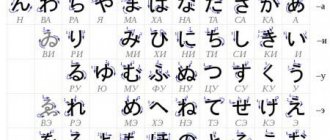At first glance, Japanese sumo wrestling looks strange: overweight men dressed in huge bikinis jostle in a small circle, and the preliminary ceremony is usually longer than the fight itself. However, dig a little deeper and you will discover a unique and technical sport with a rich history and wrestlers whose rigorous training regimen and dedication are nothing short of impressive.
Sumo is a form of wrestling that has long been a national sport in Japan. Its origins date back to the Yayoi period (circa 300 BC – 300 AD). It incorporates many elements of the Shinto religion in the form of various rituals and ceremonies that usually last much longer than the fight itself. Until now, competitions in this sport are considered a sacred event, and the pavilion in which the fights take place is equated to a Shinto shrine.
Origin and development
The origins of sumo wrestling are lost in the mists of time, but it is believed to have been first practiced during the Yayoi period as part of a Shinto ritual where "kami" or spirits were summoned to fight.
Traditionally, the very first fighter is considered to be Nomi no Sukune, who was ordered by Emperor Suyinin (29 BC - 70 AD) to fight Tagima no Kehai. Nomi no Sukune won, although naturally, since he was a descendant of Amenohoha, the son of the sun goddess Amaterasu.
Figures of sumo wrestlers surrounded the most ancient Japanese burials, and clay toys depicting them from the Kofun period were also found.
Sumo wrestling competitions in Japan became an important ritual in the 8th century. n. e. The fights, known as tsuji-zumo, were fought by samurai. They didn't have many rules, often ended in death, and the prize was cash. Another type of fighting was kanjin-zumo, which was held in temples to raise money for their upkeep.
After the 12th century, this struggle almost disappeared as the decline of the power of the Imperial Court and the emergence of the samurai class led to political instability. The last official sumo-seti was held in 1174. Under the shoguns, public matches were prohibited, but martial arts were encouraged among the samurai. There are several paintings of people practicing this type of wrestling in full gear outside the Doha area.
It is believed that the circle separating the wrestlers from the spectators appeared in the 16th century. at a tournament organized by the main military leader of Japan, Oda Nobunaga. Back then, sumo wrestlers wore loose loincloths rather than the much stiffer mawashi of today. During the Edo period, wrestlers wore edged kese-mawashi during matches, but today they are worn only during pre-tournament rituals. Most of the rest of the sportswear in use today came from the same era.
The modern history of the rules and techniques of sumo wrestling began at the Tomioka Hachimangu Shinto Shrine in Tokyo. Regular fights have been organized here since 1684. In particular, former samurai Ikazuchi Gondaiu created the rules and arena that are still used today. Sumo wrestlers, popularly called "rikishi", later became professional athletes, and wrestling itself became a national sport. As before, it continues to be considered sacred.
History of the development of the discipline
The first mention of sumo dates back to 712 AD. It is found in the book “Kojiki”, which tells about ancient Japan. This is the oldest source of Japanese writing and contains hundreds of interesting historical events and legends. According to one of them, more than 2.5 thousand years ago the gods fought for the right to own the united lands of Japan. To avoid large-scale bloodshed, they decided to fight in a sumo match.
By the way, in ancient scriptures this discipline is called “sumai”. The term "sumo" appeared later in the ritual teachings of the Shinto religion. It signified the battle between man and God and was a mandatory rite of passage for the initiation of a new emperor. Closer to the 9th century, sumo became a traditional pastime for the rich. Provincial rulers organized local and territorial competitions among peasants, who were paid good money for winning. It was for this reason that the discipline quickly spread throughout the empire.
Sumo appeared in its modern form in the 16th century. First, changes affected the area for fights, which used to be improvised, and then became round (doha). Then uniform rules of combat appeared. They developed back in the Heian era at the end of the 8th century, but then it was only forbidden to grab an opponent by the hair and hit him in the head. The modern rules of sumo were detailed in regulations in the 20th century.
For a long time, sumo wrestlers had the status of amateurs, so they mainly earned money by performing in traveling circuses and at major festivals. By the mid-18th century, there were several autonomous associations in the country that promoted discipline and competition. The organizers managed to reach a single multiplier only in the second half of the 20th century, when the decision was made to create the All-Japan Sumo Association.
Soviet society first learned about the existence of such a martial art in 1965, when demonstration performances by Japanese wrestlers were held in Moscow and Khabarovsk. This tournament marked the beginning of friendly relations between the martial arts associations of the USSR and Japan. Russians began participating in professional sumo in 2000.
Shinto rituals
The explosive physical strike of sumo wrestling is preceded by a long series of rituals and postures that originate from ancient duels and the Shinto religion. One such ritual involves the competitor lifting one leg and striking the ground hard with it several times. It comes from the archaic practice of warriors making such movements before battle to frighten the enemy, which is called "siko". The same ritual was performed by the goddess Amaterasu when she encountered the disobedient brother Susanoo in Shinto mythology.
Also, wrestlers clap their hands before the fight. This is another Shinto tradition: the worshiper claps to indicate the beginning and end of a prayer.
Another ritual involves athletes periodically scattering salt. It is an act of purification that is practiced at Shinto shrines to drive away evil spirits.
Finally, the referee of a sumo match is a striking sight in itself, as he wears a robe similar to those worn in medieval times by the Japanese imperial court and worn by Shinto priests today.
Inventory, equipment
The equipment of sumo wrestlers is incredibly modest and corresponds to what was in use dozens of centuries ago. The athlete uses only a belt called “mawashi”, which is wrapped several times around the body and between the legs. Special decorations - sagari - are usually tied to it. Amateur sumo wrestlers can wear a belt on top of their shorts. The best fighters also own an additional belt, resembling the shape of an apron, in which they take part in ritual actions.
Another characteristic feature of sumo is the athletes’ hairstyle. It is called takayama and consists of hair gathered into a knot at the crown of the head. The shape and location have two functions - aesthetic and head protection in case of a fall.
Ground for wrestling
Two wrestlers face each other while standing on a raised square platform of compacted clay covered with a layer of sand. The width of the sumo wrestling area measures exactly 5.7 m on each side and 34–60 cm in height. The ring or dohe is a perfect circle with a diameter of 4.57 m, marked with braided rice straw. After each competition the site is dismantled. Raised high above the platform is a canopy with colored tassels hanging from its 4 corners, and the entire ensemble has the status of a sacred Shinto shrine, which it closely resembles.
The winner of the bout must either push his opponent out of the straw circle or force him down. If any part of a wrestler's body other than his feet touches the clay floor, he loses. Athletes with their hair tied in an elaborate knot in imitation of medieval samurai wear a "mawashi" or large belt that an opponent can grab onto to wrestle or lift the wearer, pushing him out of the circle or knocking him down. In the fastest bouts, this task may only take a few seconds to complete, but the difficulty lies in the sheer size of the wrestlers. Many sumo wrestlers weigh 150 kg, but the mass of individual giants can exceed 200 kg.
Sumo is wrestling. You can't punch or kick - but there is a life hack
In general, sumo is a type of wrestling, and is usually won by either pushing the opponent out of the circle, throwing him to the ground, or forcing him to touch the surface with something other than his feet. According to modern rules, it is forbidden to hit an opponent with a fist or foot.
But palm strikes are not prohibited, which some fighters take advantage of, knocking out their opponents with hard slaps. With their weight and physical strength, this is not so difficult. You can verify this by looking at this clip:
Organization
Some sumo wrestlers in Japan are superstars, especially tournament winners who receive the prestigious title of "yokozuna" or grand champion. However, participation in this sport is not limited to the Japanese, as some yokozuna were born in Mongolia and Hawaii. Even lesser-known sumo wrestlers are popular, as they are often invited into private homes at the end of winter to rid the house of bad spirits or "oni" in a ceremony known as "setsubun" ("second day, second month"). The sumo wrestler throws the beans and repeatedly shouts the phrase “oni wa soto, fuku wa uchi,” which means “demons away, luck come.”
Sumo wrestlers are called "rikishi" in Japanese. The two hieroglyphs that form this word mean "strength" and "warrior". In 6 leagues - maku-uchi, zure, makushita, sandanme, dzonidan, zonokuchi - there are about 650 rikishi.
Maku-uchi (comprising 42 top athletes) naturally receives the most media attention. At the top is yokozuna, the great champion. This position is usually achieved by winning two hon-basho (major tournaments that determine rankings) in a row. There are 6 honbasho each year (in Tokyo, Osaka, Nagoya and Fukuoka), one in each odd-numbered month, and they last 15 days. As of 2021, there have only been 72 yokozuna in the history of the sport, which should give an idea of how difficult it is to achieve this title. Rikishi from the top two divisions (known as sekitori) compete in every major tournament.
Technique
Unlike other martial arts such as karate or judo, sumo stays a little further away. And there is an explanation for this. After all, many martial arts appeared to the world quite recently - in the 19th-20th centuries; sumo in this regard can give a head start to two millennia, being a synthesis of martial art and ancient traditions.
How wrong are those who believe that sumo is the most primitive wrestling. This is far from true. Firstly, modern sumo only has about 82 basic techniques. Secondly, the arsenal of actions against an opponent is quite wide: opponents can only be hit with an open palm; slaps and pushes, grabs and throws, trips and sweeps are allowed. The beginning of the battle is unchanged: the opponents run towards each other, colliding with each other. Sumo loves the brave and persistent, so attack is always in fashion. Those fighters who try to evade or use a prohibited technique are usually whistled by the audience. Practice shows that sumo wrestlers do not use most techniques. As a rule, some of them prefer grappling and belt wrestling, others prefer fighting with strong pushes at a distance.
The most common are usually considered “yorikiri” - a mutual grab when the athlete, who turned out to be with his back to the edge of the circle, was forced out by the opponent, “kakezori” - a throw of the opponent over the hip. But the most difficult and beautiful is considered to be “ipponza” (grabbing one of the opponent’s hands with both hands and then throwing him over the back). In the history of sumo there was only one case (the period 1990-2001) when this technique allowed the sumo wrestler Kayo (weight - 170 kg) to defeat Musashimaru (weight - 220 kg).
Preliminary ritual
The unique thing about Japanese sumo wrestling is that the spectacular pre-match ceremony is as exciting as the fight itself. The day before each major tournament, the clay platform of the dohe with a 4.55 m diameter circle in which the fight takes place is “cleaned” with a prayer for the safety of the rikishi. It involves placing salt, husked rice, dried chestnut, dried seaweed, dried cuttlefish and nutmeg berries in a small hole in the center of the ring as an offering to the gods.
Rikishi climb the doha from the east and west, with the east side doing it first. The wrestlers go to the center of the circle and stop exactly behind the shikiri-sen lines, separated by only a few centimeters. They gaze into each other's eyes and perform a ritual called "siko". It involves wrestlers clapping their hands and alternately raising and lowering their right and left legs, which is probably the action with which the sport is most associated outside of Japan. But there's more to it than just warming up your muscles. Clapping is used to attract the attention of the gods, arms raised to the sky demonstrate the absence of weapons, and the famous stomping of feet is necessary to crush any evil spirit.
At the end of the shiko, the rikishi leave the circle and purify themselves. The first ritual is called "chikara-mizu", which literally means "strong water". Each rikishi receives this water from the opponent they last defeated. Similar to the cleansing ritual at shrines and temples, each rikishi takes a handful of water, rinses his mouth with it, and washes his body. The wrestlers then take a handful of salt and scatter it over the ring.
Duel
As soon as the shinpan judge gives the signal for the bout to begin, each rikishi crouches behind an 80 cm long white line called "shikiri-sen". Since sumo wrestling is designed for two participants, there are two such lines. The match begins when both rikishi place their clenched fists behind their shikiri-sen.
Since it is the wrestlers themselves who ultimately decide the start of the match, these moments can be incredibly tense. Rikishi will often crouch for a few seconds, carefully observing what their opponent will do before standing up again. They may exit the ring to their corner, but if they do so, they must clear the circle again with salt before re-entering. A single fight determines the winner (it's not the best system), and since the first few seconds during which the rikishi clash often prove decisive, you can see why the preliminaries are often the most intense moments of the fight.
If the referee determines that one of the wrestlers did not place both fists on the ground before the match began, or if the opponent determines that he is not quite ready, the match will be stopped. In this case, the sumo wrestlers must return to their starting position.
The starting tachi-ai jerk is one of the most important stages of the fight. A good start allows a sumo wrestler to wrestle in the style that suits him best.
There are officially 82 techniques, called kimari-te ("decisive hand"), with which a rikishi can win a match (for example, pushing, throwing behind the neck, etc.). Once the winner is determined, both rikishi stand on either side of the circle and bow to each other without showing emotion, before the loser leaves the sumo wrestling ring and the shinpan officially announces the winner.
General entrance to the ring
Each day of competition begins with lower rank matches before it is time for the jure and maku-uchi matches. Each round of fighting is preceded by a special procession called dohe-iri, where the rikishi stand outside the dohe circle wearing their mawashi (silk loincloths) and perform an alternative version of the shiko ritual mentioned above. They clap their hands and rub their hands together to make sure the gods are watching, symbolically purifying themselves before leaving the ring, waving their mawashi to show that there are no weapons underneath.
Yokozuna performs his own ritual of entering the circle, which is a more complex and longer version of shiko, also involving the shinpan and the other two rikishi present at the doha.
Rules of battle
The basic rule of sumo wrestling is simple: if any part of the body other than the legs touches the ground or the athlete steps outside the circle, the match ends and the opponent is declared the winner. During the fight the following actions are prohibited:
- hair grabbing;
- eye gouging;
- punches (slaps with open palms are allowed);
- choking (although open palm thrusts into the opponent's throat are permitted);
- capturing part of the opponent's mawashi in the crotch area.
The wrestler who used a prohibited technique automatically loses, as does the one whose mawashi came loose. Also, a defeat is counted towards someone who cannot continue the fight (for example, after an injury). After the winner is announced, the judge must report the move that led to the victory.
There are no weight categories. It's not just about size: agility can also be important, and small rikishi have the advantage of being able to retreat and slip behind their larger opponent to use their considerable momentum against them.
Working day
So, about the most interesting thing - the harsh training regime of professional wrestlers. Young rikishi wake up early: around five in the morning the first training begins. Older comrades catch up later (hazing is revered in sumo: newcomers even wash their clothes and wash the backs of their more experienced colleagues).
During training, wrestlers work on the ability to stand firmly on their feet, flexibility and strength. During the warm-up, in addition to the familiar push-ups and squats, athletes do the basic stretching exercise (siko) hundreds of times, raising one or the other leg to its maximum height.
The next exercise (also stretching) is called “matawari” and is performed with the participation of a partner who gently presses on the sumo wrestler’s back, and he, spreading his legs as far apart as possible (almost in a splits), leans forward and tries to touch the ground with his stomach. Hitting and pushing techniques are practiced against a high wooden pole (teppo), on which the wrestler hits with his bare palms.
After warming up, athletes spar either according to the moshai-geiko system (the winner fights with a new partner) or butsukari-geiko (the athlete stands in a standing position, and his comrades, one after another, run into him, trying to push him out of the arena).
“It’s rare that a day goes by without bumps and bruises, because sparring takes place in Spartan conditions - on clay and sand,” says the expert. At 11 o'clock the first break comes: the wrestlers take a hot bath and have a meal. “Having worked up an excellent appetite, athletes eat without restrictions,” our consultant licks his lips.
After eating, all rikishi enjoy an afternoon nap before heading out for evening training. The day ends with dinner, at which, by the way, tired athletes do not particularly limit themselves to alcohol - beer or sake.
The working day of amateur sumo wrestlers takes place in more humane conditions. Training begins not so early and takes place not in a clay arena - dohyo, but in a softer plastic arena. Amateurs even have a day off - usually Monday. “Intensive training takes place on Saturday and Sunday in order to accustom the athletes’ biorhythms to the surge in loads at the end of the week, when competitions are usually held,” explains the expert.
Participation of foreigners and women
Although the sport has historically been dominated by the Japanese, recently foreigners have increasingly become common participants in sumo competitions. The Rikishi who has achieved the biggest tournament wins is a Mongolian athlete named Hakuho Se (Munkhbatyn Davaajargal). Currently, foreigners (most of whom are Mongolian) make up about 5% of the total number of sumo wrestlers.
Women cannot participate in professional sumo wrestling. But this ban does not apply to amateurs. Brazil is considered the center of women's sumo wrestling.
How sumo wrestlers sign autographs
The handprint of a sumo wrestler is called tegata and is a talisman of happiness. Although tournaments sell everything from chocolate in the shape of a wrestler to plush toys with the image of your favorite rikishi, tegata is not an item for sale. The only way to become its owner is to receive an autograph from the hands of the wrestler himself, at competitions.
The tegata is stamped on a shikishi board measuring 27 by 24 cm. These autographed palm prints are made in batches and given to members of the respective clubs or other selected people.
Handprints are made with black or red paint, lately more often black, and the name, which is added later, only with black paint.
Only highly ranked wrestlers are allowed to tag.











